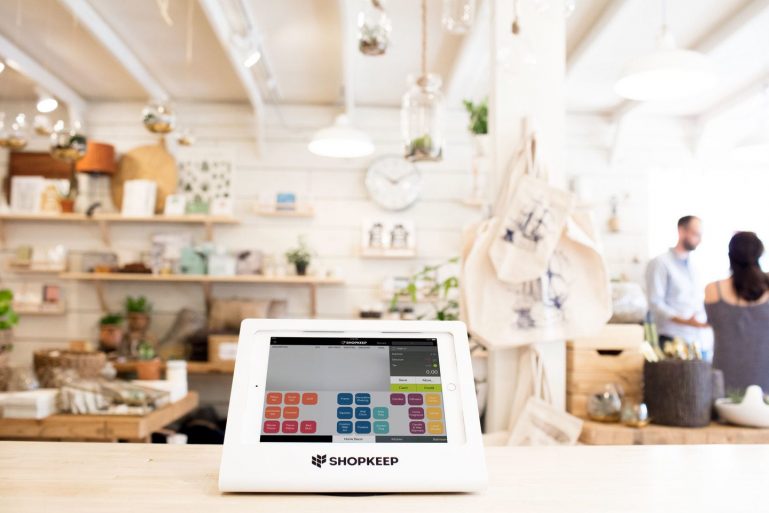Top Insights for Independent Retail in 2018

Originally published by Andrew Gorrin on Total Retail on Aug 17, 2018.
There’s no doubt that even as 2018 shapes up to be a great year for small, independent retailers, it takes a lot to open, run and manage a small business. On top of managing a brick-and-mortar location, retailers have an e-commerce channel to consider, new digital forms of payment, and the need to drive repeat business in order to turn a profit. Owners often need to work long hours and be able to handle multiple functional areas to successfully operate a business, such as HR, marketing and technology, just to name a few. They need to be both strategic and tactical, nimble and thoughtful, creative and analytical. That being said, in a recent survey, The ShopKeep Small Business Pulse, in which 1,794 small business owners were surveyed, there are some definitive trends and areas of focus that SMB’s are looking at for 2018.
Mobile Payments
For the past few years mobile payments has been a hot topic for retailers. But has mobile payments lived up to the hype? In speaking with our ShopKeep customers, we found that adoption isn’t picking up as rapidly as some originally thought. We surveyed small business owners in 2016, and 42 percent said they expected mobile payments to account for 50 percent of transactions by 2018. When small business owners responded in the most recent ShopKeep Pulse report, just 24 percent said they have seen even a slight increase in the usage of mobile payments over the past two years, as opposed to 68 percent who feel that mobile payment volume has remained more or less the same. There continues to be a focus on digital payments, so we’ll likely see continued adoption as time goes on and as NFC-enabled card readers become the norm and consumers get more familiar with the concept.
E-Commerce
Brick-and-mortar stores certainly have a lot to contend with, not least of which is the ever-growing population who wants to shop online. When it comes to e-commerce, about 23 percent of merchants feel this is a channel they need to address, but they don’t see this as a revenue driver for their business just yet. Additionally, growing a business through e-commerce requires a whole new group of skills that many brick-and-mortar retailers don’t have, creating yet another challenge for them.
Eighty-eight percent of small businesses say that “increasing sales” is their key business goal over the next three years, so if they’re only seeing incremental growth through e-commerce, they’re likely to put more focus on growth through the methods they know best — brick-and-mortar. It’s not to say that more retailers wouldn’t take advantage of e-commerce, but it highlights why this needs to be seamless for business owners. Easy-to-use e-commerce platforms that help with online demand generation and sync to a point of sale (POS) are prime examples of what small business owners are looking for. With this they can launch online stores without having to do a ton of heavy lifting to optimize both experiences.
Diversifying Products and Inventory
With so many big retailers closing physical stores (Toys”R”Us, Gap, Ann Taylor), there’s an opportunity for small business retailers to step up to the plate. In order to succeed, they need to provide shoppers with products and services that they can’t find online, or create an in-store experience that goes above and beyond what they can find online. According to the survey findings, 11 percent of small business owners are making the diversification of inventory a key goal, which makes sense as having the right merchandise mix can drive traffic to your store and inspire consumers to buy on the spot. Additionally, 19 percent said they would spend available capital on inventory.
Another tactic expected from SMBs is the expansion into new categories of products or services as a means to create differentiation. At least 3 percent of the survey takers identified their business as a “hybrid retailer.” Hybrid retail is a split service brick-and-mortar business that provides offerings across two verticals, such as a coffee shop that’s also a bookstore or a retail clothing store that also sells baked goods. Business owners are embracing this trend because it creates a differentiated in-store experience that can’t be replicated online, as well as multiple revenue streams. This trend is expected to grow as savvy small business owners look to find unique ways to drive additional traffic into their stores and offset the high cost of retail space.
Marketing and Loyalty to Drive Repeat Business
Anyone who runs an independent business knows that getting the word out and driving customer retention are some of the biggest challenges. Without a big, well-known consumer brand standing behind them, they need to be scrappy about opportunities to bring customers into their stores, drive repeat traffic and develop relationships with their customers. Thirty-two percent of small and independent business owners want to improve their marketing performance, and 29 percent want to improve their in-store performance. The challenge is that most business owners don’t have the time or expertise to develop and manage complex marketing campaigns on their own. As a result, easy-to-use services that help boost a small business’ presence online and simple loyalty programs are important tools to help small businesses succeed on this front.
Andrew Gorrin is the chief marketing officer of ShopKeep, a cloud-based iPad point-of-sale system.
Want to try ShopKeep for yourself?
Just answer a few easy questions.
Need help finding the right point of sale?
Just complete the form. We’ll call you right back to explain how ShopKeep can work for you.
Hit the ground running.Sprinting, in fact!
Read our free, comprehensive guide, Small Business 101, to learn all you need to know about starting a thriving business.

